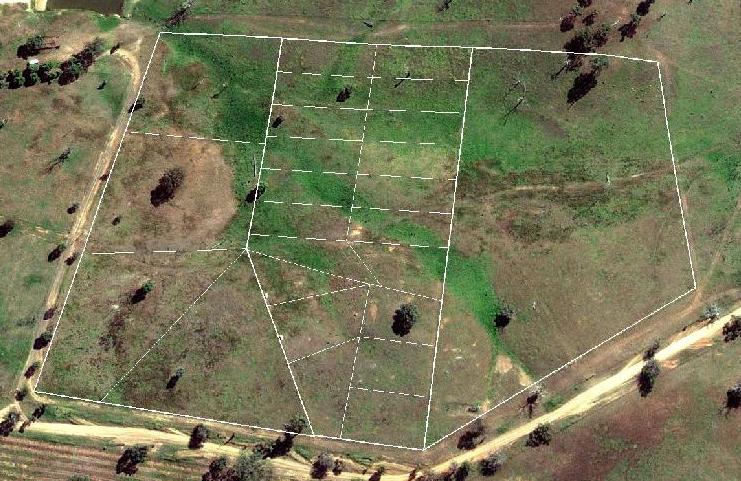Orange Proof Site grazing systems experiment
At Panuara, the Orange Proof Site, four key practices were put into place to increase return from native pastures while maintaining pasture composition. They were as follows:
- Utilising fertilised native pastures with a high value dual-purpose Merino enterprise.
- Applying minimum feed on offer (800 kg DM/ha) and ground cover (80%) benchmarks.
- Testing the value of higher intensity grazing systems to further increase production through improved utilisation while maintaining pasture composition.
- Identification and mapping production zones. This allowed targeted application of phosphorus fertiliser only to the proportion of land that would be most responsive.
A summary of the key elements of the site are provided below. For further details of measurements, results and recommendations, see the following key message pages:
- Landscape variability can be identified, mapped and managed
- Composition of pastures with a high native perennial component is stable under managed grazing
- Increasing the number of paddocks and implementing rotational grazing can result in higher stocking rates, higher per hectare production and higher gross margins, even though per head production is lower. Return on investment depends on required additional infrastructure.
Livestock
The grazing systems were all grazed with Merino ewes of Centre Plus origin which were joined to White Suffolk rams at the beginning of April to lamb in September. Sheep were selected based on Australian Sheep Breeding Values to have higher than average genetic potential for wool production, reproductive performance and lamb growth. The later lambing time (August/September) meant that peak feed demand coincided with peak pasture supply. This allowed for higher stocking rates than could be achieved with an earlier lambing time.
Grazing systems and pasture benchmarks
Sheep were either removed and placed in containment areas, or stocking rates were reduced, when the benchmark targets of 80% ground cover and herbage mass of 800 kg DM/ha levels were reached. The grazing systems were as follows:
1-Paddock – animals grazed the entire plot continuously, until benchmark targets were reached.
4-Paddock – sheep were moved between four equally sized paddocks. The time left in each paddock was based on the available feed in relation to the animal requirements and the stage of pasture growth. When animal requirements were higher (e.g. lambing and lactation), animals were moved sooner (i.e. pastures were not grazed as heavily). This normally coincided with high pasture growth rates in spring. Sheep were moved into the most suitable paddock determined by feed on offer, rather than following a set paddock order.
20-Paddock – sheep were moved between 20 paddocks. As with the 4-Paddock system, movements were based on available feed in relation to the animal requirements, pasture growth rate and stage of plant growth. More productive paddocks were grazed for longer or more frequently. The grazing period generally ranged from one to seven days, averaging four days and with rest periods from 30 to 140 days, averaging 70 days. Paddocks were rotated more quickly when pasture was actively growing in spring, which coincided with higher animal requirements. Paddocks were generally grazed in the same order, but were sometimes omitted or grazed out-of-order if there was insufficient pasture quality and feed on offer for the animal requirements, to avoid seed contamination of lambs, or to maintain ground cover on ridgelines.
Production zones and fertiliser inputs
Like most native pastures in the Central Tablelands, the Panuara site is undulating and highly variable in aspect, slope, and soil type and depth. The altitude ranges from 770 to 820 metres above sea level. There are large differences in the capacity for pasture production due to topography. Therefore, before the experiment began the site was classified and mapped into three production zones (Figure 1) by visually estimating green herbage in spring.

The production zones were used to determine where grazing system replications and plots were located. All plots within a replication were estimated to have a similar proportion of High, Medium and Low Production Zones so they all had the same potential productivity (Figure 2). Phosphorous fertiliser (Single Superphosphate) was applied only to the High Production Zone at 250 kg/ha in 2009 and 125 kg/ha in 2010 which maintained fertility levels. With no fertiliser inputs, the low production and medium production zones declined in their phosphorous levels, from 54 to 41 mg/kg and 31 to 23 mg/kg respectively.


